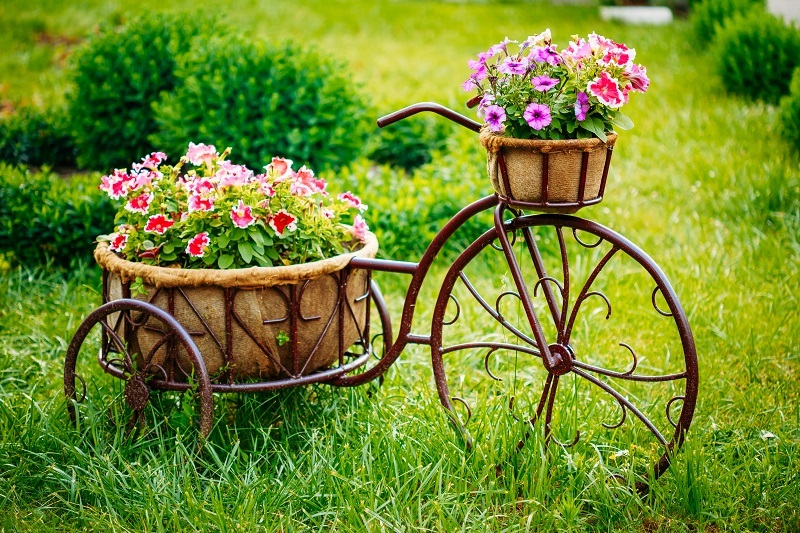All About Orchids: Care that Cultivates Beauty
Posted on 18/08/2025
All About Orchids: Care that Cultivates Beauty
The world of orchids is as mesmerizing as it is diverse. Known for their stunning elegance and exotic blooms, orchids have captured the fascination of plant lovers and collectors worldwide. Whether you're a seasoned gardener or a beginner hoping to master the art of orchid cultivation, understanding these unique plants is key to seeing them thrive. All About Orchids: Care that Cultivates Beauty is your comprehensive guide to nurturing these beloved blooms.
Introduction to Orchids
Orchids belong to the Orchidaceae family, one of the largest and most diverse plant families in the world, with over 25,000 species and more than 100,000 hybrids. Renowned for their dazzling flowers and intricate structures, orchids have adapted to nearly every habitat on Earth--from tropical rainforests to arid deserts. Understanding the unique characteristics of orchids is the first step toward successful orchid care.
Why Orchids are Unique
- Wide variety of flower shapes and colors - Orchids are famous for their stunning variations.
- Longevity - Many orchid blooms last for weeks or even months, outshining most other houseplants.
- Air-purifying abilities - Orchids can help purify indoor air.
- Symbolism - Across cultures, orchids symbolize love, luxury, beauty, and strength.

Popular Types of Orchids for Indoor Cultivation
With so many varieties, choosing the right orchid for your home or office can be overwhelming. Here are some of the most beloved orchids for indoor gardeners:
- Phalaenopsis (Moth Orchid): Easy to care for and widely available, Phalaenopsis is perfect for beginners.
- Cattleya: Known for their showy, fragrant flowers; they thrive in bright light.
- Dendrobium: Versatile and resilient, Dendrobium orchids produce clusters of blooms.
- Oncidium (Dancing Lady Orchid): Varieties boasting brilliant yellow flowers that resemble a dancing lady.
- Paphiopedilum (Lady Slipper Orchid): Unique pouch-like blooms and lush foliage, ideal for collecting.
Orchid Care: The Essentials
Orchid plant care might seem daunting, but with the right knowledge, these spectacular flowers will flourish. Proper orchid care techniques ensure your plants remain robust, healthy, and ready to bloom again each season.
Understanding Light Requirements
- Bright, indirect sunlight is crucial. Direct sun may scorch the leaves, while too little light inhibits flowering.
- East or west-facing windows are often ideal for most orchid species.
- Should leaves turn yellow or red, the plant is likely getting too much sun. Dark green leaves may point to insufficient light.
The Right Temperature and Humidity
- Most orchids thrive between 65?F and 80?F (18?C-26?C) during the day, with a 10?F drop at night to stimulate blooms.
- Humidity levels between 40-60% are ideal. If your home is dry, consider using a humidity tray or a room humidifier.
- Mist the leaves occasionally, but avoid excess water sitting on them to prevent rot.
Watering Your Orchids
- Overwatering is the most common cause of failure in orchid cultivation.
- Always water thoroughly, allowing water to drain out; never let roots sit in water.
- Watering frequency depends on the orchid type, the potting mix, and humidity, but typically ranges from once per week to every 10 days.
- Use lukewarm, distilled, or rainwater; avoid softened water due to salt content.
Best Potting Mixes for Orchids
Orchids don't grow in regular potting soil. Their roots need air circulation and fast drainage.
- Bark-based mixes - Common for Phalaenopsis, Cattleya, and Dendrobium orchids.
- Sphagnum moss - Retains moisture but requires careful watering.
- Coconut husk, perlite, and charcoal - Sometimes blended for extra drainage and aeration.
Fertilizing Orchids for Optimal Growth
- Apply a balanced fertilizer (20-20-20) once a month during active growth.
- Many growers prefer to fertilize weakly weekly - using diluted fertilizer every week.
- Reduce fertilization when orchids are dormant.
Repotting Orchids: When and How
Repotting is essential for healthy orchid root systems and long-lasting blooms. Orchids generally need repotting every 1-2 years, or when you notice:
- Potting media breaks down or emits a foul odor.
- Roots overgrow the container or appear rotted.
- Visible pests or fungal growth in the pot.
How to Repot an Orchid
- Gently remove the orchid from its current pot.
- Trim away any dead or mushy roots with sterilized scissors.
- Place the orchid in fresh, damp potting mix, ensuring roots have room to breathe.
- Water lightly and keep out of direct sun for several days post-repotting.
Common Orchid Problems and Solutions
Despite your best efforts, you may encounter some challenges on your orchid care journey. Here's how to identify and remedy common issues:
Yellow Leaves
- Causes: Overwatering, inadequate light, or aging leaves.
- Solution: Adjust watering schedule; move to brighter, indirect light.
Pests and Diseases
- Mealybugs, scale, and spider mites are common pests.
- Prevention: Inspect new plants before introducing them to your collection.
- Treatment: Use insecticidal soap or wipe affected areas with rubbing alcohol.
Bud Blast (Buds drying and falling before opening)
- Causes: Sudden temperature changes, drafts, or root disturbance.
- Solution: Keep temperature stable and avoid moving plants when in bud.
Root Rot
- Cause: Constant sogginess or poor drainage in potting mix.
- Solution: Remove affected roots and repot into fresh, well-draining media.
How to Encourage Orchids to Rebloom
One of the greatest rewards in orchid care is witnessing your plant bloom year after year. Orchid reblooming can be achieved with the following steps:
- Maintain a consistent day and night temperature difference (10?F/5?C) to trigger flower spikes.
- Provide adequate, indirect sunlight for several hours each day.
- Allow a period of rest after flowering, reducing watering and fertilizing slightly before resuming normal care.
- Avoid unnecessary repotting or relocation while developing flower spikes.
Advanced Tips for Passionate Orchid Growers
If you've mastered the basics of orchid cultivation, consider these advanced strategies for truly spectacular plants:
- Simulate a rainforest environment: Group orchids together to increase humidity, or use an automated misting system.
- Experiment with orchid hybrids: Hybridizing orchids can result in unique colors or shapes.
- Grow orchids in terrariums or specialty cases: This is excellent for small species needing high humidity.
- Record care routines and bloom cycles in a gardening journal to refine your techniques year after year.

The Joy of Growing Orchids at Home
Beyond their obvious beauty, orchids offer countless benefits to indoor gardeners. These fascinating plants enhance decor, improve indoor air quality, and provide a rewarding hobby that cultivates patience, observation, and gentle care. For those willing to learn and adapt, orchids return the favor with years of glorious blooms and a touch of the exotic in everyday life.
Frequently Asked Questions About Orchid Care
- How often should you water orchids?
Water only when the potting mix feels dry; generally, once weekly but vary for your environment. - Do orchids need direct sunlight?
No, indirect bright light is best. Avoid placing orchids in harsh afternoon sun. - How do you know when to repot an orchid?
Repot when the potting media breaks down, or if roots are crowded or decaying. - What should I do if my orchid won't bloom?
Improve light conditions, ensure day-night temperature drop, and check watering habits.
Conclusion: Cultivating Orchid Beauty
Delving into all about orchids and their care reveals that these plants, while intricate, reward devotion and consistency. By providing the right light, water, nutrition, and attention to environmental factors, anyone can enjoy the splendor and satisfaction of thriving orchids. Consider this guide your starting point in the captivating journey of orchid care--and watch your collection blossom with beauty for years to come.
Ready to embark on the journey? Whether you're growing your first Phalaenopsis or cultivating rare hybrids, remember: Care that cultivates beauty is always rewarded with breathtaking blooms!
Latest Posts
All About Orchids: Care that Cultivates Beauty
Learn How to Easily Prolong the Freshness of Your Flowers
10 Surprisingly Resilient Office Plants That Need Little Care
Enchanting Gifts: The Top 5 Flowers for Valentine's Celebrations





